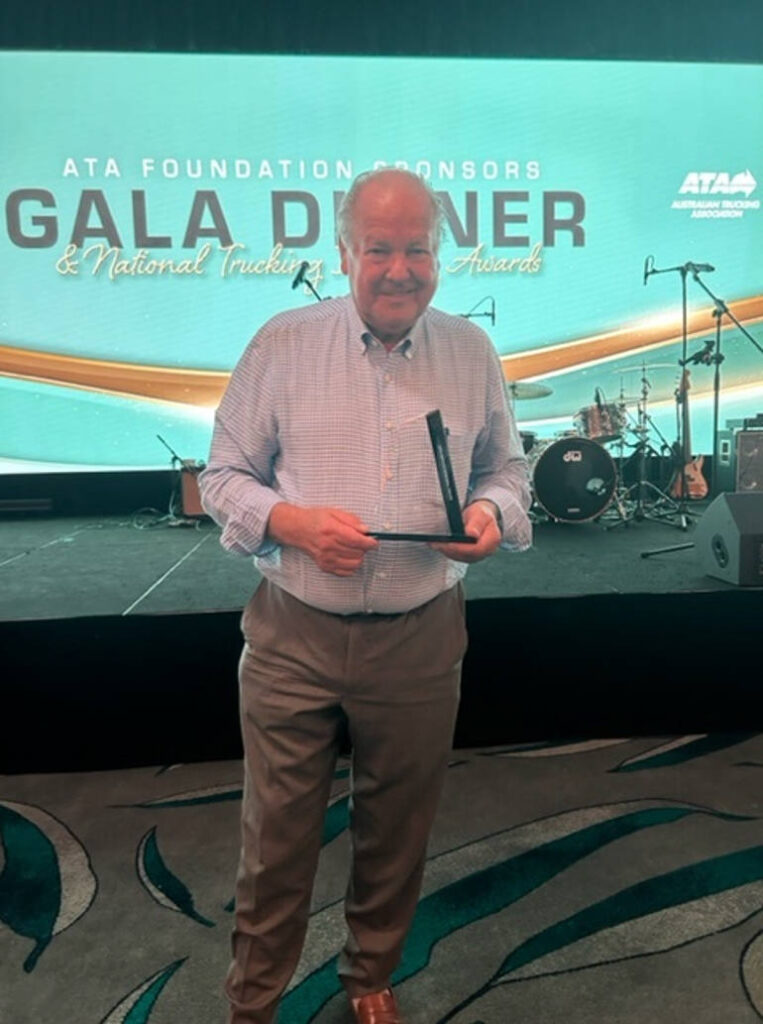In a session at the Australian Trucking Association’s annual conference earlier this year Ron Finemore, executive chairman of family-owned Ron Finemore Transport, passionately urged the adoption of advanced fatigue monitoring systems to improve safety for drivers and operators.
“There’s one thing that I’ve been keen on for 50 years is safety. Safety is the number one thing. Unfortunately, 47 years ago, I had three drivers killed in a week. And that only drove me around the twists,” said Finemore embarking on a talk that went way over his allotted time. Meanwhile, no-one in the audience stirred and the convenor of the panel didn’t tinkle a bell to stop him.
Finemore said those truck driver deaths triggered a quest to look for fatigue management technology.
“And eight years ago, I came across something. And what we have today is the greatest advanced safety technology I’ve seen in my 60 plus years in the industry. It’s a real game changer that saves lives. The key issue is that since we’ve had it in, we’ve done 500 million kilometres in seven years, and we’ve had one, one fatigue related accident.”
Essentially Finemore is talking about systems that comprise cabin mounted cameras, speed detection, braking, seat-belt use and more, commonly known in the industry as IVMS, or In-Vehicle Monitoring Systems.
Ron Finemore Transport operates a fleet of heavy vehicles across Victoria, NSW and Queensland, servicing supermarkets, fuel distributors, oil companies and food and industrial products manufacturers.
Fatigue laws were introduced in Australia in 1938 and are presently under review as part of the national heavy vehicle law review.
Finemore said he’d like to see prescriptive fatigue rules, including work diaries and electronic log books, done away with in favour of adoption of in-vehicle monitoring systems.
“I think we’ve got a window of opportunity to make life easier for our drivers to allow them to drive when they’re fit and rest when they’re tired. And it always doesn’t work out the same as what a log book tells you you should do.”
Finemore said when he first started introducing the IVMS into truck cabs in his fleet he encountered driver pushback.
“It’s the sword and the shield. The sword, if you’re doing the wrong thing, will attack you, but the shield will protect you if you’re showing that you’re doing the right thing. So we’ve invested heavily in developing our systems to support our fatigue detection technology and to address the real facts that provides we investigate problems and implement actions to deliver better safety to our drivers and the community overall. I know it saves lives. Our people, it’s not just me, say that, and are very passionate about the benefits the safety tool delivers. And they use it every day because they know it works. I used to worry about it making me more vulnerable and helping put me in jail. But our experiences show us it does the exact opposite.”
Finemore went on to show videos from driver-facing cameras where distractions — getting a drink, reaching across the seat to fetch something — led to the vehicle moving across the road. He said they used these videos to coach their drivers.
“There’s a lot of benefits. We can talk to the people and the large majority change their habits. And that’s a major plus.”
The technology is there. Australia likes to pride itself on being early adopters of technology such as with mobile phones and seat belts, so why not in-cab video technology that can detect imminent micro sleeps, and highlight the consequences of distraction.







